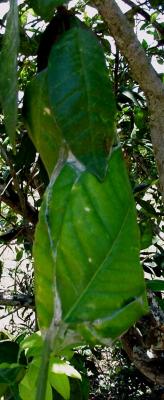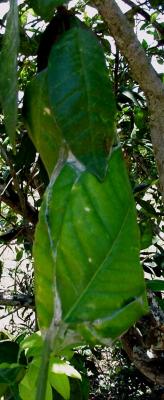

Red fire ants or weaver ants (Oecophylla longinoda)
A particular case is that of the red fire ants or weaver ants which nest on citrus and other fruit trees (guava, soursop, cashewnuts, coconut palms among others). These ants are present in many countries in Africa. They are common in the coastal regions in East Africa.
They built nests on trees by joining leaves with silk produced by the larvae. These ants are very active moving on the trees and on the ground in search of food. They are highly voracious feeding on a large range of insects visiting the trees, and are important in controlling many insect pests in fruit trees and coconut palms. In spite of these benefits, weaver ants are considered by some as a pest due to their aggressiveness combined with painful bites, which makes fruit picking difficult, and to their association with honeydew-producing insects. They can foster the build-up of these insect pests, but it has been observed that they do kill some of them when the amount of honeydew produced by these insects is bigger than the amount required by the colony of weaver ants.
The benefits provided by predatory ants feeding or deterring insect pests must be outweighed against the damage they may cost indirectly. As a whole weaver ants are considered beneficial. They have been used actively in China for the control of citrus pests for centuries (Way and Khoo, 1992). Experienced farmers in Asia and Africa have developed their own methods to deal with the inconvenience of weaver ants during harvesting.
- A common practice among farmers is to throw wood ash on the branches of the tree they want to climb. The ants fall down of the branches and have difficulties to return giving time to the farmer to harvest.
- Other farmers rub their hands and arms with wood ashes, to prevent the ants from attacking them.
- Other rub their arms and feet with certain repellent products before climbing the tree, using protective clothing or harvest at times of the day when weaver ants are least active (Van Mele and Cuc, 2007)
